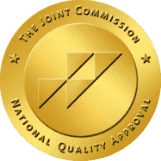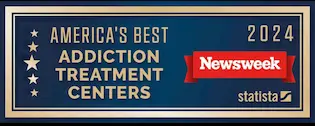TMS Therapy Success Rate

Article Contents
What is TMS?
Before going into TMS therapy success rate, it is important to understand what TMS is.
Transcranial magnetic stimulation (TMS) is a non-invasive procedure used to stimulate the nerve cells in the brain. TMS treatment is used for those who suffer from neurological disorders as a way to reduce the symptoms that they feel. As a treatment for neuro disorders, TMS is making waves, with a lot of successful cases that are behind the high success rate. Typically, TMS treatment follows a process, which includes:
1
EEG Evaluation
Before the treatment, doctors will take a reading of the brain activity, which is known as an electroencephalogram (EEG) evaluation. In doing this, they can determine the course of treatment that will work best in effectively helping patients improve their symptoms.
Magnetic Pulses
To stimulate the brain, magnetic pulses are sent through the brain using a TMS device. It is a non-invasive procedure that takes about twenty to thirty minutes each visit. The waves not only stimulate brain activity but also stimulate nerve cells.
rTMS
Repetitive transcranial magnetic stimulation (rTMS) is the process in which magnetic pulses are sent into the brain several times. The repetitive manner stimulates the waves in the brain and starts to wake up the nerve cells. The rTMS cost is about $200 to $300 per session, though it is covered by most insurance companies for those suffering from depression and anxiety.
Benefits of TMS Therapy
There are several benefits to TMS therapy. It is because of these benefits that many doctors have started to recommend it for patients who are dealing with depression and anxiety, especially when other treatments have failed. Some of the key benefits include:
2
Structural
For structural issues in the brain, TMS can significantly help. Structural issues have been said to cause a number of issues and neurological disorders.
Physiological
Because the brain waves are targeted and neurostimulation takes place, there are notable physiological benefits to TMS therapy. Physiological disorders can range from headaches to symptoms of depression and anxiety, all of which are greatly reduced with help from TMS therapy.
High Success Rates
The TMS therapy success rate has hit as high as 70%. That is a significant success rate, especially when compared to traditional treatments for depression and anxiety. Not only is the TMS therapy success rate high but, the amount of remission time is also high, with some patients living symptom-free for up to six months.
Non-Invasive
Treatments that deal with the brain can be scary. With TMS, there are no incisions made and patients can go in for treatment on their lunch break. It’s 100% non-invasive and is pain-free.
No Side Effects
Another big plus of TMS therapy is that there are no side effects. The system stimulates the brain waves and rests outside of the body. For those who did experience side effects, it was general discomfort from the treatment, going away after their first few days.
No Drugs Required
For treatment for neuro disorders and depression, many patients are administered drugs. These drugs not only take time to get used to but also lose their effectiveness over time. Because there are no drugs associated with TMS treatment, patients don’t have to worry about drugs.
FDA Cleared
Because of all of the success, TMS is now FDA approved. It has been used for dual diagnosis and even as a method to combat symptoms of depression, anxiety, and schizophrenia. Its success will probably see its approval for more treatments soon.
Covered by Most Insurance
Depression is recognized as a treatable disorder and is therefore covered by several insurance companies. Though the cost can seem high for a course, the rate of remission guarantees that patients will not need several courses to experience relief from symptoms.
When insurance covers the treatment, it helps to relieve the cost or, in some cases, could take care of the costs entirely. Either way, there are options to make it more affordable, something that patients will surely love.
Zero Downtime
There is no need to recover from treatments or courses. Patients can go on about their day after each session and feel normal. It is non-invasive, comes with no side effects, and has been proved to work. For four weeks, patients can step into the office, have a seat in a comfortable chair, and receive their treatment, going right back to work.
What to Expect in TMS Therapy
For those that are having their first treatment, there are a few things to expect. Likely, patients won’t receive treatment before seeing a doctor, making sure that the treatment is recommended for them and their condition. When considering TMS therapy, here’s what you can expect.
3
TMS Depression Treatment Cost?
The cost of treatment can vary depending on the course and the number of times patients are spending in clinics. On average, both depression and autism TMS treatment cost about $200 to $300 per session. Still, treatments for depression are covered by most insurance providers. An affordable rate combined with the TMS therapy success rate is the reason why this treatment has caught a lot of attention.
4
Who Administers TMS?
When it comes time to administer the test, patients will go to a certified clinic. There, a technician will set them up and get the treatment started. There will also likely be a medical doctor nearby, supervising the entire process and checking in from time to time.
How Long is the Therapy?
Sessions can last anywhere between twenty and forty minutes. In most cases, doctors will recommend a course, which could extend anywhere between four to six weeks at a time. After each course, there is another evaluation before treatments are continued to check for progress and results.
How to Prepare for TMS?
To prepare for TMS, patients will first have to meet with their doctors. During that time, they will undergo a few things, including:
Physical exam
Here, your doctor will check your overall health. From checking medical records to administering blood tests, this is all about checking whether or not you are in good enough health to have a treatment.
Psychiatric evaluation
In addition to a physical examination, patients will also have to undergo a psychiatric evaluation. Here, doctors want to understand symptoms and get a good feel for how the patient is feeling.
Success Rate of TMS
The TMS therapy success rate is one of the main reasons why doctors are now looking at it as a recommended treatment for depression, anxiety, autism, and more. It is said that there the success rate has been between 50% to 60% for people with depression. TMS treatment is not only effective but comes with little risk for side effects and is something that can be administered with zero downtime.
5
Relief Rate
Of those who were suffering from symptoms of depression, 60% saw a vast improvement. These patients felt a sense of relief and didn’t display severe symptoms in most cases. Those that did experience some symptoms only felt slight discomfort as they got used to the treatments.
Complete remission rate from all symptoms, about 50% of patients that underwent regular TMS treatments experienced it. That is significant because no traditional treatment has been able to achieve those results.
No One Size Fits All
Just like any treatment for neuro disorders, it is critical to note that not everyone will experience the same results. TMS therapy works well for many but, it might not work as well for all. In some cases, it may also take multiple rounds, something that patients and their doctors will have to decide.
TMS Combined with Other Therapy and Medication
Because TMS treatment comes with little downtime and no symptoms, it can be used in combination with other treatments. Doctors will usually reserve combination treatments for those that suffer from severe symptoms. Here are a few things that patients with combination treatments can expect.
Response
When prescription medicine has started to fail, doctors recommend TMS therapy. It has proven effective in helping when other treatments have failed, creating a response in the brain that helps it heal. The success rate is higher for patients who have not responded well to other treatments, making it a great alternative.
Remission
When it comes to battling depression, medication is considered a lifetime thing. It has to be tweaked here and there as the body gets used to it and creates a hassle for the patient. For TMS therapy, remission comes along after just one course in most cases and has left some patients relieved of their symptoms.
Sustained remission
The TMS therapy success rate is high and so is the rate of remission but, what about sustained remission. When tested after two months, the majority were still not experiencing symptoms. The symptoms started to reappear slightly at 3 months and an increasing amount saw them after six months.
Because symptoms can start to reappear after months without TMS therapy, doctors typically recommend that patients get follow-up treatments so that symptoms do not reappear. Evaluations take place after each course and doctors follow up to see how individual patients respond.
More About Addiction





